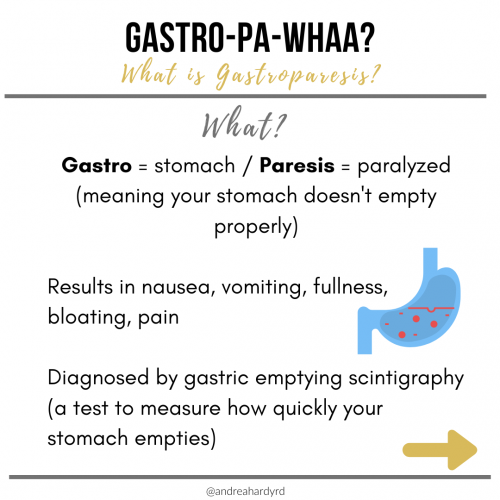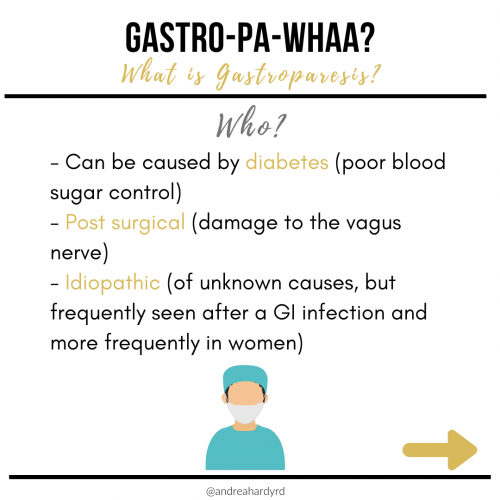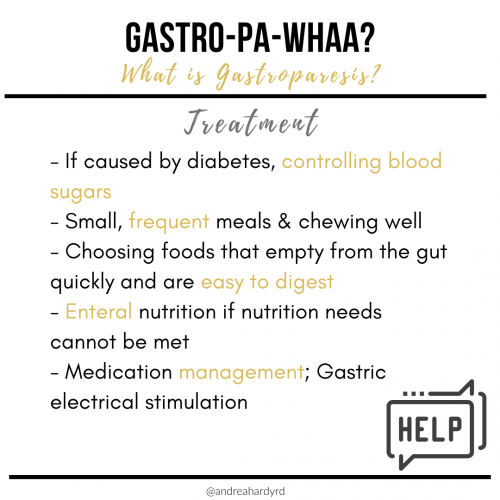On Instagram @AndreaHardyRD, I talk all about gastroparesis, what it is, who can be at risk, and the the treatment options available.
Gastroparesis.
Last week I shared on my feed that I had SEVERAL gastroparesis patients in one week, which is not particularly normal for our practice as it is a rare condition (about 0.02% of the population are diagnosed with gastroparesis).
Gastroparesis literally means paralysis of the stomach – the stomach doesn’t empty well, causing nausea, vomiting, pain, and bloating.
This occurs when your vagus nerve (the ‘information highway’ responsible for signalling digestion) becomes damaged, and/or when the stomachs’ ‘pacemaker cells’, which are responsible for controlling digestion, become damaged.
Some of the common cases include poor blood sugar control from diabetes or surgery damaging the vagus nerve, and is also seen after a viral infection.
It is typically diagnosed by a gastric emptying study, also called gastric emptying scintigraphy if you want to get technical. They very simply radio-label a standardized meal (hope you like egg sandwiches), and take a series of images to measure how quickly your stomach empties.
Normal gastric retention (or the amount left in your stomach at 1 hour is 90%, 2h is 60%, 3h is 30% and 4h is 10%.
Your doctor will look at the results as a whole and make an interpretation as to whether the amount of food you retain is concerning.
From there, they come up with a plan!
Typically, diet and lifestyle changes, in combination with medication management are the mainstays of treatment, however in more severe cases, enteral nutrition (feeding directly into the small bowel to by-pass the stomach), or a surgical implantable device may be considered.
Dietitian is KEY in coming up with a nutrition plan that works for you. Working with a GI dietitian (like my team @ignite.nutrition.inc) can help you get on track!
Any questions, class?⠀




Recent Comments